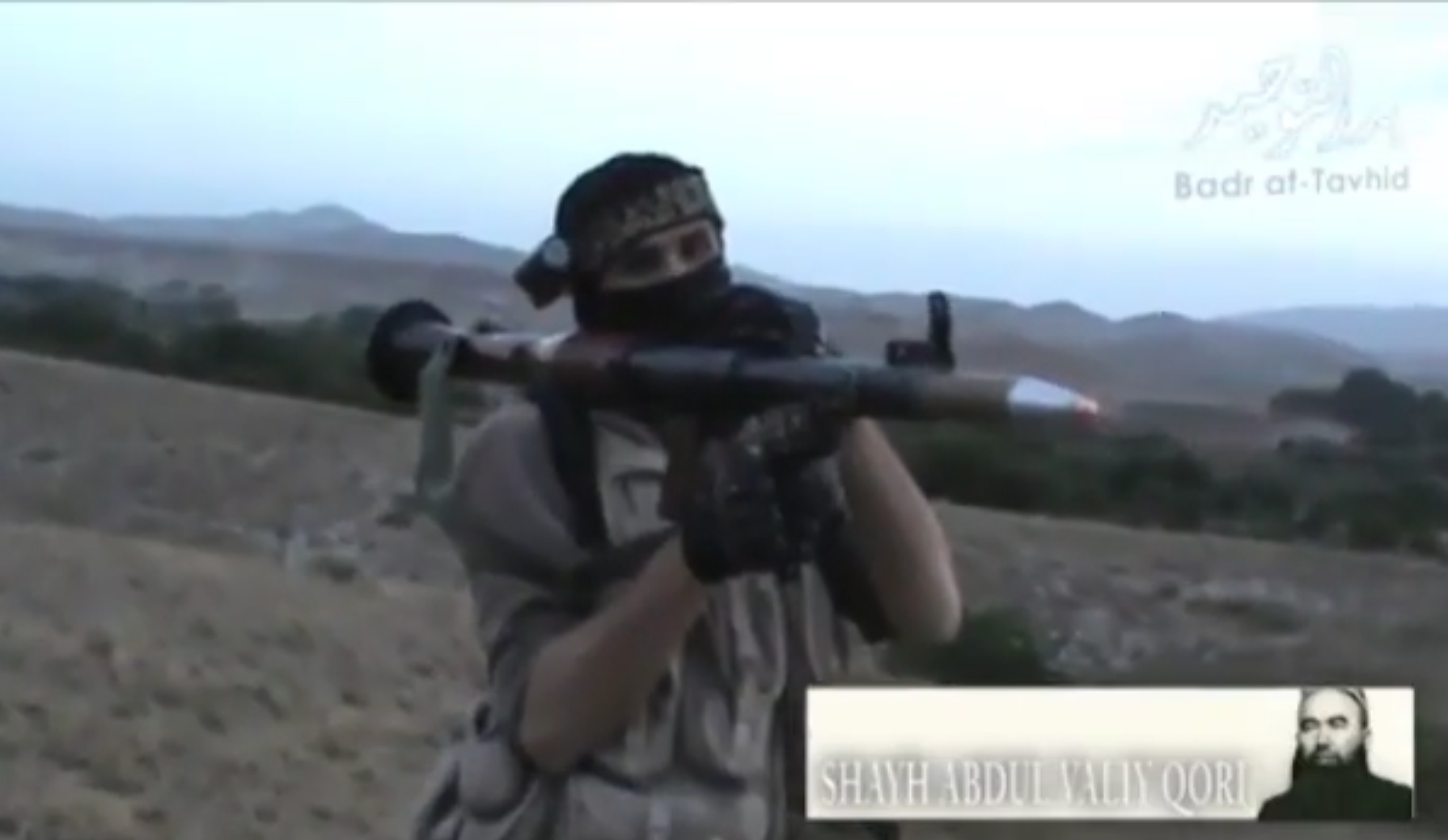
Al Qaeda-linked Uzbek groups advertise operations in Afghanistan
The Imam Bukhari Jamaat and the Islamic Jihad Union have claimed attacks in eastern and northern Afghanistan. Members of these two groups are also known to have operated in Syria.

The Imam Bukhari Jamaat and the Islamic Jihad Union have claimed attacks in eastern and northern Afghanistan. Members of these two groups are also known to have operated in Syria.
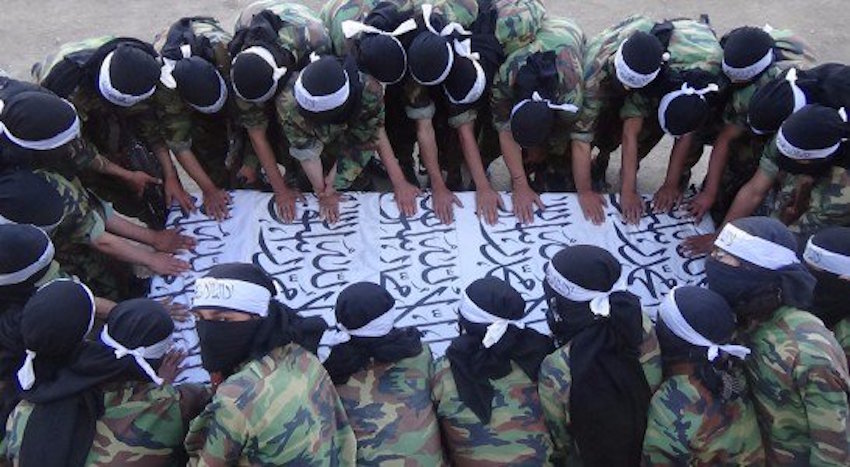
The Taliban claims it now controls four of Kandahar’s 18 districts, and that others are contested. Shorabak was the location of an al Qaeda camp that was described by a US general in 2015 as “probably the largest training camp-type facility that we have seen in 14 years of war.”
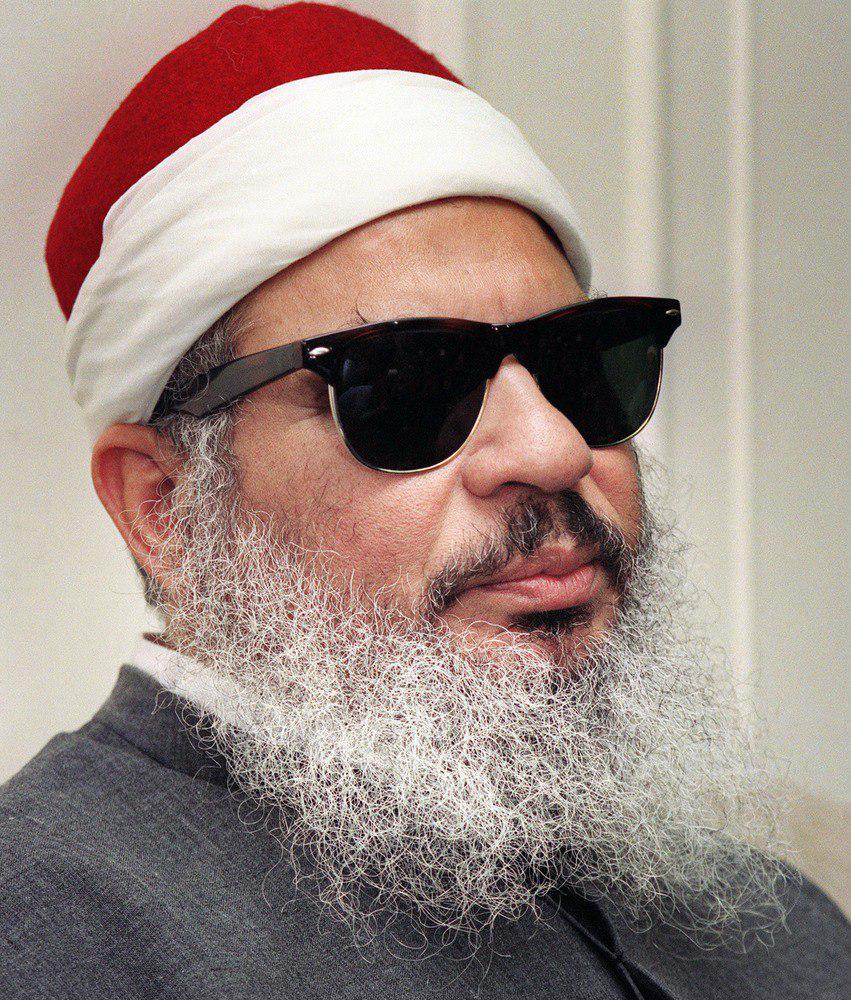
Al Qaeda agitated for Sheikh Omar Abdel Rahman’s release from a US prison for more than 20 years. Rahman, whose teachings had a significant influence on al Qaeda’s development, was convicted in 1995 of conspiring to attack several New York City landmarks.

Qari Saifullah Akhtar’s waged jihad for four decades. He has been directly linked to Osama bin Laden and Pakistan’s Inter-Services Intelligence Directorate.

The Pentagon announced that 11 al Qaeda operatives were killed in a pair of airstrikes near Idlib, Syria earlier this month. One of them, Abu Hani al Masri, is described as “a legacy al Qaeda terrorist with ties to the group’s senior leaders, including Ayman al Zawahiri and Osama bin Laden.”
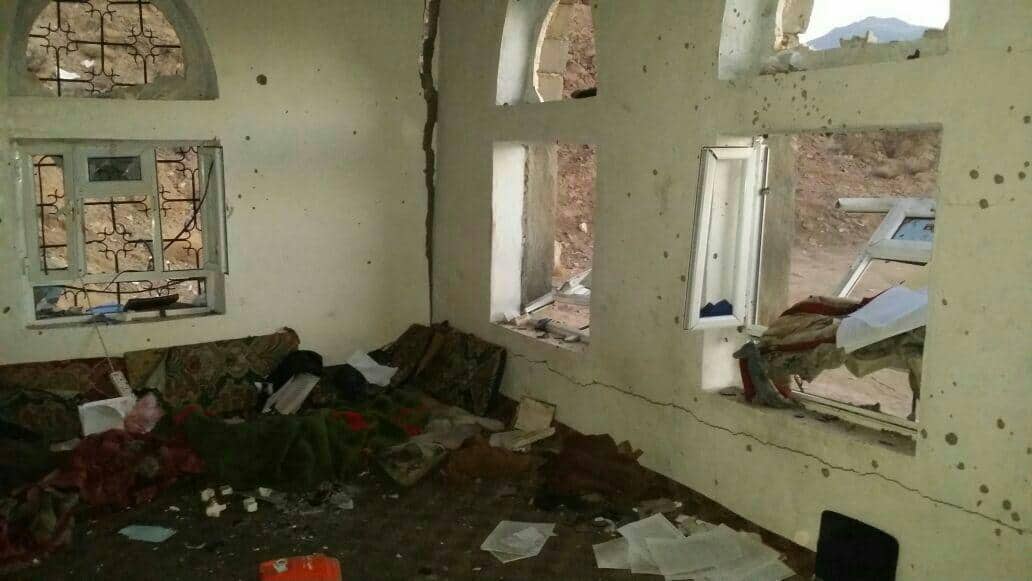
The seventh issue of Al Qaeda’s Al Nafir Bulletin, which was released earlier today, denounced the recent American counterterrorism raid in Yemen. The group’s statement portrayed the operation as an assault on all Muslims and threatened President Donald Trump, saying “the flame of jihad has ignited and reached all over the world.”

Five groups, including al Qaeda’s rebranded branch, have announced the creation of a new group in Syria. The move comes after weeks of reported disagreements and clashes between the insurgents in northern Syria.

In a statement released last week, Abu Muhammad al Maqdisi, an influential jihadi ideologue aligned with al Qaeda, criticized Turkey’s cooperation with Russia against the Islamic State. Maqdisi warned jihadists and Islamists in Syria to rethink their decision to work with Turkey’s Operation Euphrates Shield, which has captured significant territory from the so-called caliphate in northern Syria.

A B-52 bomber and a number of remotely piloted aircraft pounded an al Qaeda camp in Syria. The US has already launched five attacks against al Qaeda’s network in Syria since the beginning of 2017.
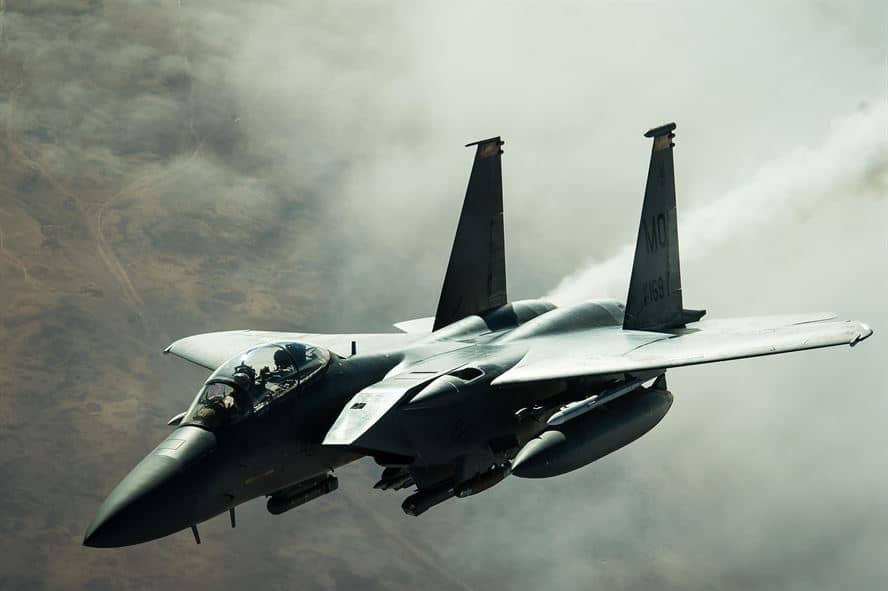
Abd al-Jalil al-Muslimi waged jihad in Afghanistan and Yemen, and had “extensive and long-standing ties to numerous al Qaeda external operations planners and terrorists” before he was killed, according tot he US military. Mohammad Habib Boussadoun al-Tunisi was an external operations leader who plotted against the West.
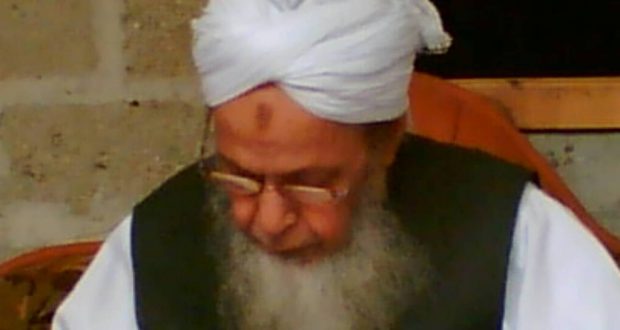
Mawlana Salimullah Khan was also the president of Pakistan’s largest confederation of Deobani seminaries and schools. His son and grandson were deported from the United States for immigration violations after the FBI linked them to an al Qaeda plot in California.
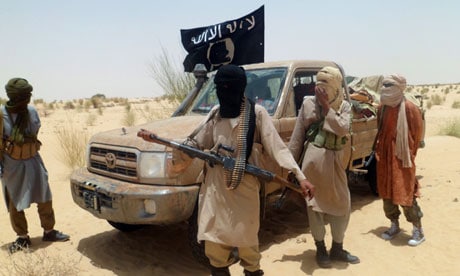
With at least 257 al Qaeda-linked attacks in Mali and its neighboring countries, this represents a significant uptick in the al Qaeda-led insurgency in northern Mali in recent years.

The State Department has designated Ibrahim al Banna as a terrorist. Al Banna has served as an al Qaeda official in Yemen since the 1990s. He originally joined the Egyptian Islamic Jihad (EIJ) and has been one of Ayman al Zawahiri’s loyalists for decades.
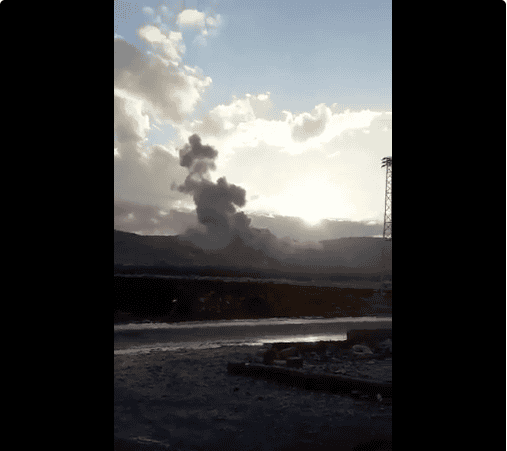
The Pentagon is still assessing the results of airstrikes on Jan. 1 and Jan. 3 in northern Syria, but it is believed that 20 al Qaeda “militants” were killed in the bombings. The airstrikes are likely among the most significant carried out against al Qaeda in Syria since Sept. 2014. President Obama reportedly authorized a more robust air campaign against al Qaeda in Syria late last year, after the administration had previously defined down the threat.

The US military announced the deaths of Bilal al Utabyi, al Qaeda’s deputy leader for eastern Afghanistan, and Wahid al-Junabi, a senior al Qaeda explosives expert. Both were killed on Oct. 23 in the airstrike that also killed Faruq al Qahtani, al Qaeda emir for eastern Afghanistan.

The US has killed or captured approximately 250 al Qaeda and al Qaeda in the Indian Subcontinent leaders and members in Afghanistan in 2016. US officials have downplayed the extent of al Qaeda’s presence in the country for years. After the raids this year, US intelligence should prepare a fresh assessment.

The Afghan Special Police Force, a unit assigned to the Interior Ministry, captured an al Qaeda “financier” during a raid in the eastern Afghan province of Nangarhar on Dec. 8.

A new video from the Taliban features several images and clips of al Qaeda leaders, further demonstrating that the two remain firmly allied more than 15 years after the 9/11 hijackings.
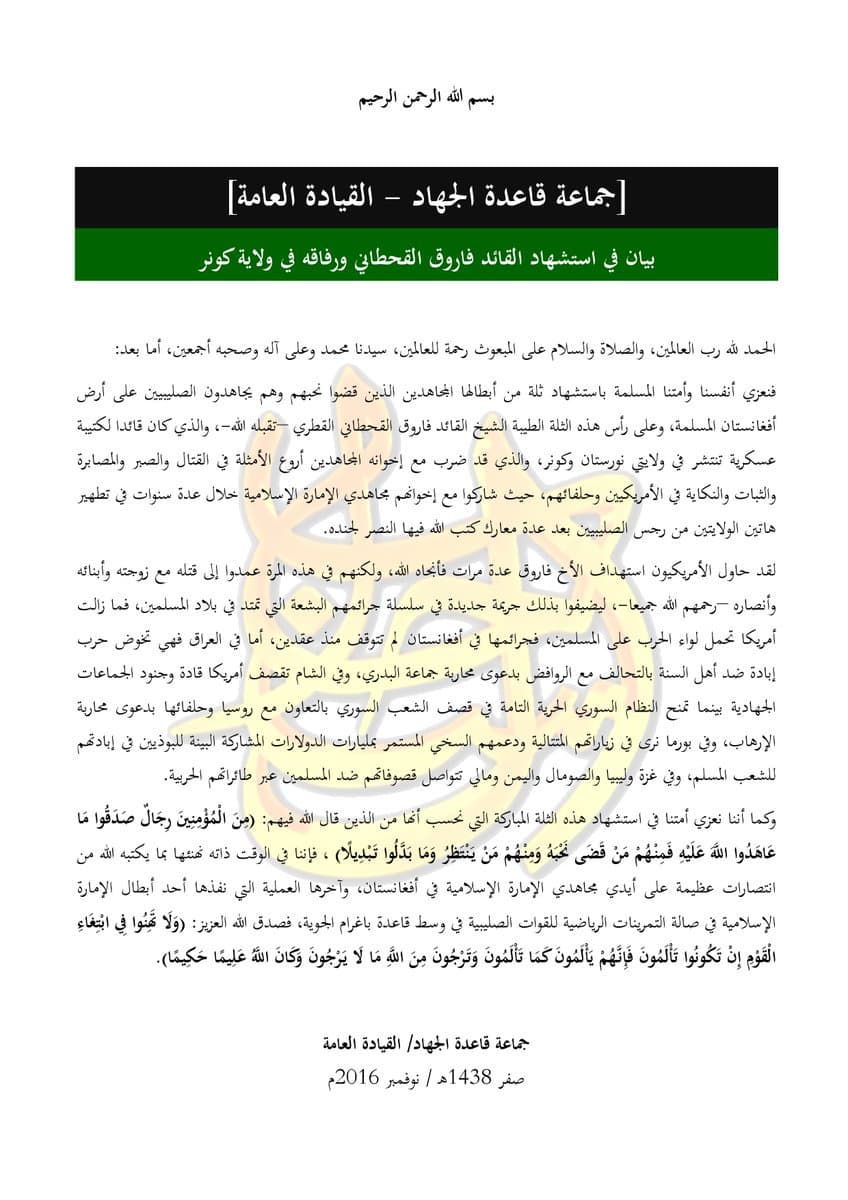
Al Qaeda’s general command has released a statement commenting on the “martyrdom” of Faruq al Qahtani and others. They were killed in an American airstrike on Oct. 23 in Afghanistan. Osama bin Laden’s files show that Qahtani was tasked with establishing new safe havens for al Qaeda in Afghanistan in 2010, if not earlier.
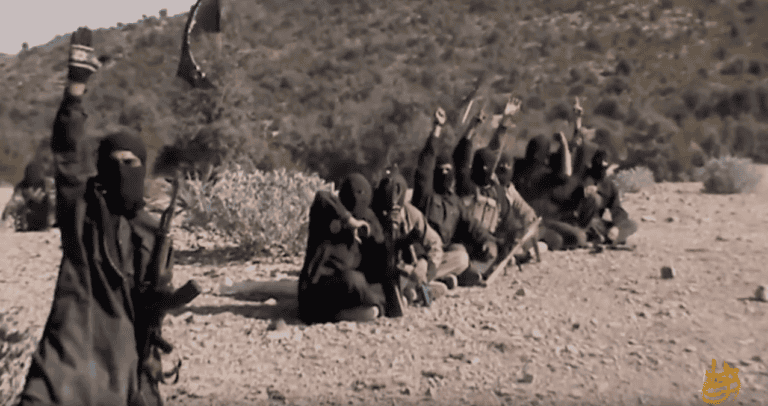
The Pentagon confirmed today that Faruq al Qatani, a senior al Qaeda leader, was killed in an airstrike in Afghanistan on Oct. 23. Qatani was suspected of planning attacks against the US. He established safe havens for al Qaeda in Afghanistan several years ago and also worked with the Taliban in the insurgency against the Afghan government, US forces and their allies.
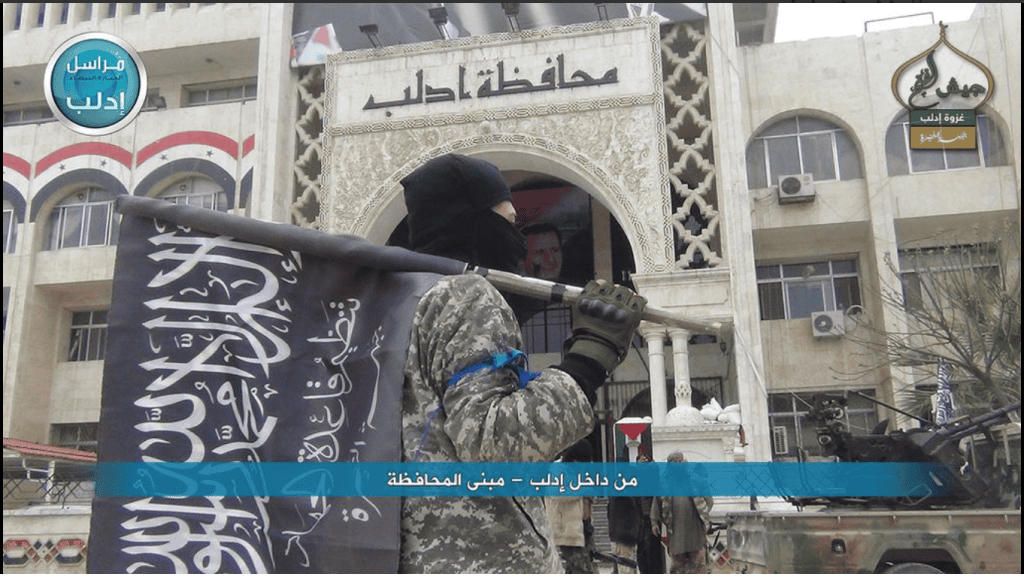
The Defense Department announced today that Haydar Kirkan, a veteran al Qaeda operative who was plotting against the West, was killed in an airstrike in Idlib, Syria on Oct. 17. Kirkan was one of several al Qaeda leaders targeted in Afghanistan, Syria and Yemen during the month of October. The Pentagon emphasized that the airstrikes demonstrate the “transregional nature” of al Qaeda.

The US targeted Faruq al Qatani and Bilal al Utabi in an airstrike in Kunar Province, Afghanistan on Oct. 23. Both of them have been involved in al Qaeda’s anti-Western plotting, according to the Pentagon. Qatani was identified as a key al Qaeda commander in Osama bin Laden’s files.

The military said it is attempting to deny al Qaeda in the Arabian Peninsula “a haven” in Yemen. The group still controls rural areas in the south.

Jund al Aqsa has sworn allegiance to Jabhat Fath al Sham, al Qaeda’s rebranded branch in Syria. Jund al Aqsa itself is an al Qaeda front group. The move comes after weeks of infighting between Jund al Aqsa and other groups opposed to Bashar al Assad’s regime.

The Pentagon has confirmed that Ahmed Salama Mabrouk was killed in an Oct. 3 airstrike in Syria’s Idlib province. According to Defense Department Press Secretary Peter Cook, Mabrouk was “one of Al Qaeda’s most senior leaders” and his death is “a blow to their ability to plot external attacks.” Mabrouk was one of the most senior officials in Jabhat Fath al Sham, al Qaeda’s rebranded branch in Syria.
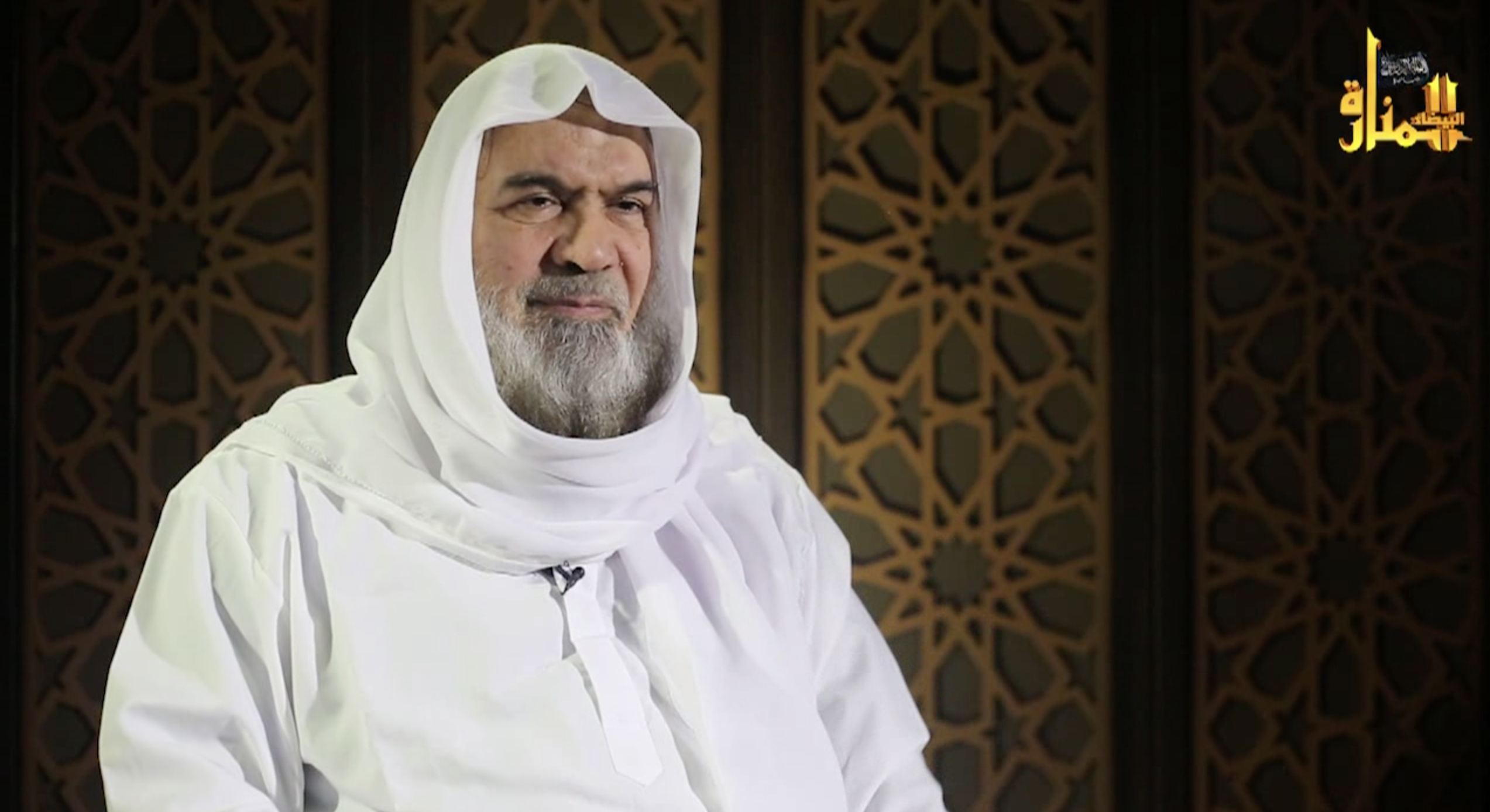
Jabhat Fath al Sham, al Qaeda’s rebranded branch in Syria, announced earlier today that Ahmed Salama Mabrouk has been killed in an airstrike in Idlib. Mabrouk was an Egyptian al Qaeda veteran and served on Jabhat Fath al Sham’s elite shura council.
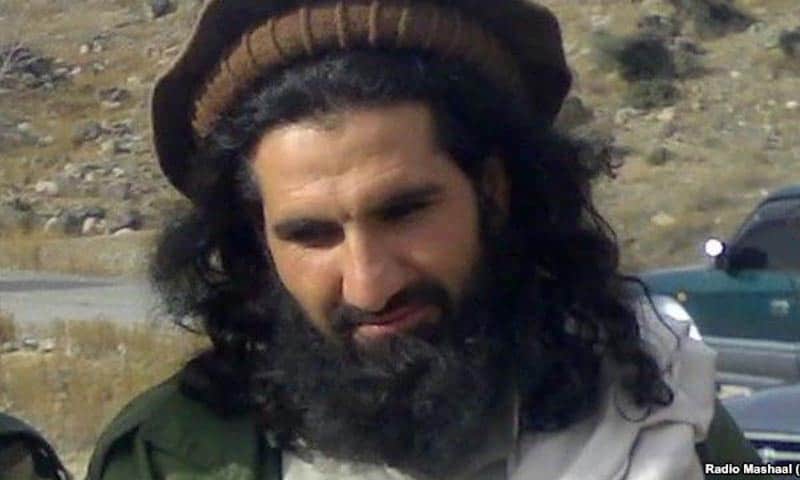
US and Afghan forces struck a group of leaders and operatives from the Pakistan-based Movement of the Taliban in South Waziristan, the Haqqani Network, and al Qaeda in the province of Paktika, according to reports from the region. At least one senior leader, known as Azam Tariq, is thought to have been killed in the strike.

General John W. Nicholson Jr., who leads NATO’s Resolute Support and US Forces Afghanistan, said yesterday that the US is hunting al Qaeda in Afghanistan’s Kandahar, Zabul, Paktika, Ghazni, Kunar, Nuristan and Nangarhar provinces. His comments are just the latest indication that al Qaeda’s presence in Afghanistan has been underestimated.
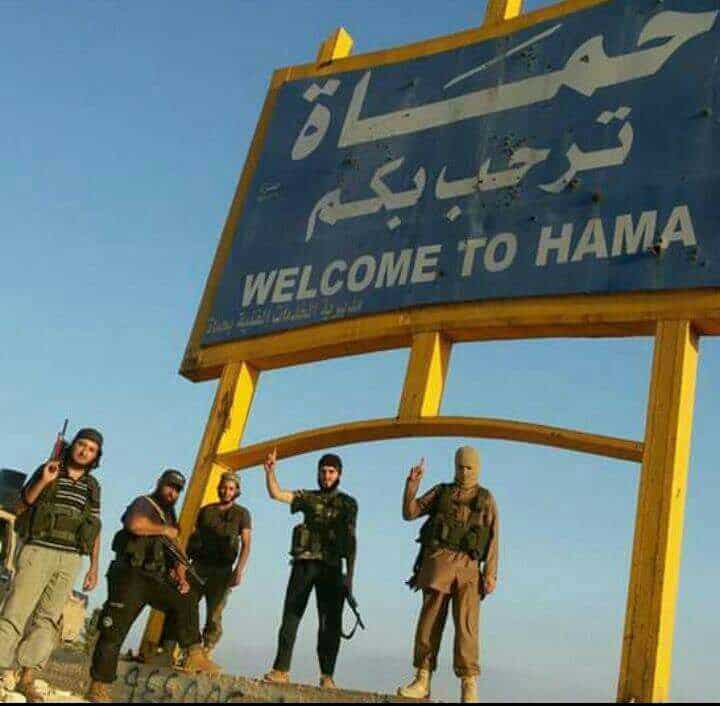
The State Department has designated Jund al Aqsa in Syria as a terrorist organization. The Long War Journal previously exposed Jund al Aqsa as an al Qaeda front group. Al Qaeda veterans have been embedded within the organization and Jund al Aqsa’s “general command” remains loyal to al Qaeda’s leaders.

The National Directorate of Security, Afghanistan intelligence agency, raided an al Qaeda encampment and killed five Pakistani terrorists in the southeastern province of Zabul.